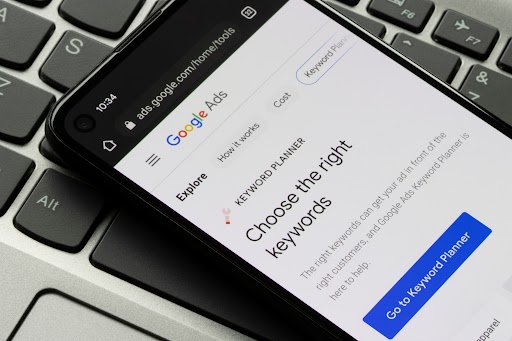Cookie Hijacking: How Attackers Steal Your Advertising Revenue?
Cookies are like little tags that websites use to recognize you when a user is online.
When you sign in to a website or app, such as a social media account or your profile on a shopping site, your internet browser remembers that you're logged in because of special cookies set by the website's server.
These cookies allow a user to stay logged in while you explore the site and click on different pages. Without cookies, you would need to log in again every time you open a new page on that website.
The sad truth about Cookies is that malicious affiliates can use them to their advantage and run your company’s advertising revenue dry. They do this by hijacking the user system by providing a fake link and waiting for the user to log in. Once in the user system, they can inject affiliate cookies into the user's session and steal commissions in the most illegitimate way possible.
So, What is Cookie Hijacking?
Cookie hijacking, also known as session hijacking, is a technique used by threat actors to access and steal your private information and also keep you from visiting certain websites.
Session cookie hijacking can result in as powerful, and in some instances, even more as finding your password. Sometimes the hackers may even gain limitless access to your resources. Daunting, isn’t it? For example, hackers may gain access ad fraudto your financial information and your company data and even steal and make purchases from your bank account.
How Does Cookie Hijacking Work?
Cookie hijacking attacks can be done in various ways, yet, the most common one revolves around malware that waits for the user to log in to a fake website. The malware then steals the cookie for that session and sends it to the hacker.
Session hijacking usually occurs when the hacker sends a fake login to the user. The user can mistake this website for a real one and clicks on the link, which lets the hacker steal the cookie. After that, every movement and data entered by the user can be accessed by the hacker.
Sometimes the hacker does not even require a fake link to steal your information because session hijacking can also be done using unsecured public networks. Hackers thrive on such Wi-Fi networks to hack into your data. And your user system can be hacked even if the site is secured and your password is encrypted.
Once the hacker hijacks your session, they can access your information and do pretty much whatever they want to do, and that includes changing your password. And because this is automated, it requires only seconds. And if the hacker enables multiple-factor authentication, the user may never gain access to their accounts ever again.
Impact of Cookie Hijacking on Advertiser’s Revenue
According to research, the total ad fraud that happened in 2020 was $23 Billion, out of which $1.4 Billion was due to affiliate fraud. Cookie hijacking is one of the primary methods used by fraudsters to steal inappropriate commissions from advertisers.
|
The malicious affiliates steal the ROI of your brand by acquiring a preexisting audience and customer base. They seek commissions without having to drive any legitimate traffic to your site, hence putting your brand’s marketing budget through turmoil. |
The threat actors often redirect the user multiple times to inject cookies into the user system. The adware affects the user system by slowing it down and degrading the customer experience. This can hamper your brand’s reputation and disregard the valuable trust of your clientele.
How Do Hackers Hijack Cookies?
Cookie hijacking requires unauthorized remote access to a user’s cookies. They tend to complete this action by hijacking the user’s session, stealing their private information, and getting complete access to their systems. There are multiple ways the threat actors can induce a trap.
Adware/Malware
Adware is unwanted harmful programs that work deceivingly with legitimate software to find their way into the user’s system. Attackers utilize such malware in the form of extensions or apps to penetrate session cookies. The malware injected into the users’ system can let the hacker remotely navigate through the machine and even provide access to the cookies of their intent.
Click Hijacking
The attackers target click elements such as search bars, action buttons, or footers to inject affiliate cookies. Click Hijacking or Clickjacking is a malicious technique employed by cyber attackers to deceive users and manipulate their actions online. It involves overlaying or disguising legitimate elements on a website or application with hidden elements that can be triggered by unsuspecting users’ clicks. By luring users to interact with these hidden elements, attackers can redirect them to unintended destinations.
Session Fixation
Session fixation is a security vulnerability that occurs when an attacker is able to manipulate or control the session identifier of a user's session. In this type of attack, the attacker either forces the user to use a specific session identifier or preys on the user's existing session identifier. The goal of session fixation is to trick the user into authenticating with a session that the attacker has access to, enabling them to hijack the user's session and gain unsanctioned access to their account.
Cross-Site Scripting
Cross-Site Scripting involves injecting harmful code into a website. This code looks like a normal part of the website but actually contains malicious instructions. Attackers use XSS to trick users into running the code, thinking it comes from a trustworthy source. When users run these scripts, the attackers can access their session information, cookies, and other sensitive data. By taking control of the user's browsing session, the attackers can modify cookies and add their own affiliate cookies to deceive advertisers.
How To Protect Your Advertising Revenue From Cookies Hijacking?
Identifying Cookie Hijacking once it is active is hard to detect. Even the antiviruses can only detect session hijacking when the damage is done. But hold on, that doesn’t mean that there are no ways to protect your brand from harm and fraud.
Virus Positive Technologies VPT is one such phenomenal organization, helping many global brands with our high-end brand compliance and monitoring tools. With VPT by your side, you can stay on top of threat actors in your affiliate program and monitor your publishers closely.
Contact us today at sales@viruspositive.com and find out more about our brand compliance and customized solutions to break through the affiliate traps.







